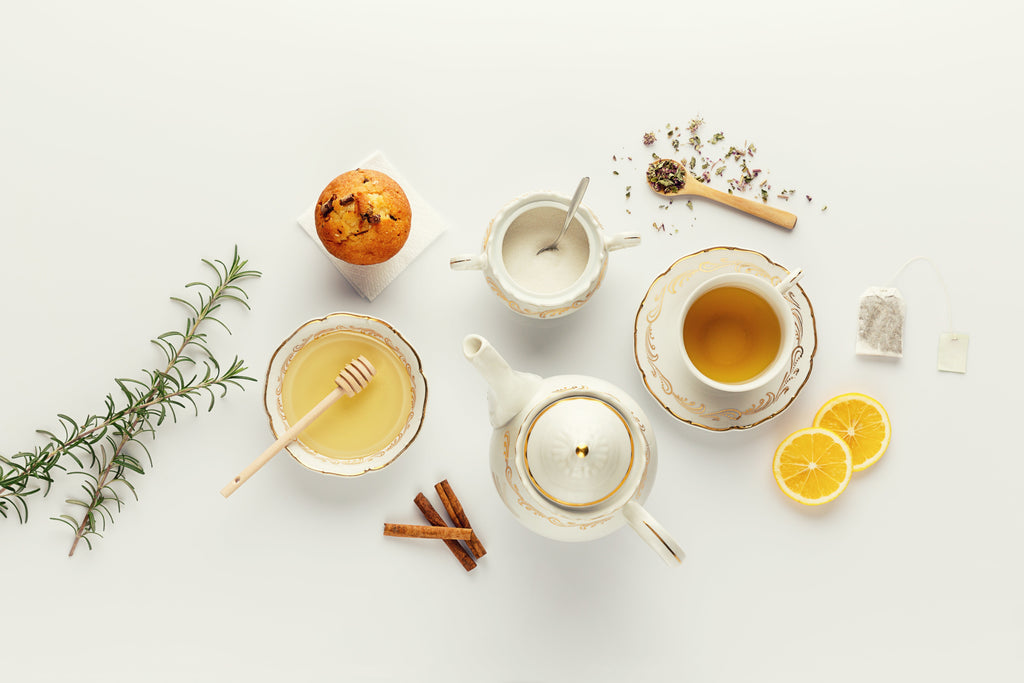The “Natural” Lie in Your Tea: What Natural Flavors Really Mean

You’re standing in the tea aisle, scanning through rows of comforting labels — Organic Peach Tranquility, Naturally Flavored Vanilla Bliss, Citrus Sunrise with Natural Flavors. Sounds healthy, sounds clean, sounds… natural.
But here’s the thing: “natural flavors” might be the biggest marketing scam in your cup.
So, What Are "Natural Flavors" Anyway?
Let’s clear something up: natural flavors aren’t little bits of dried fruit or real herbs infused in your tea. In fact, they’re usually lab-created flavor compounds, engineered to mimic the taste of natural ingredients.
Here’s how it works:
-
A company identifies a flavor found in nature (say, strawberry).
-
A chemist isolates the chemical compounds that create that flavor — like ethyl methylphenylglycidate, a chemical that smells like strawberries.
-
These compounds are extracted from a “natural source” (which could be anything from fruit to bark to yeast or even animal byproducts), highly refined, and then added back into food or drink products.
The end result? Something that tastes like nature — but was built in a lab, likely nowhere near the fruit it’s pretending to be.
Wait… That’s Still Natural?
The FDA allows the term “natural flavors” if the original flavoring compounds are derived from plant or animal material. But — and this is key — that doesn’t mean they’re minimally processed. These flavors go through heavy chemical processes, solvents, and even fermentation to be usable in food products.
So yeah, legally, it’s "natural." But practically? It’s anything but whole or clean.
Why Do Tea Companies Use Natural Flavors?
-
Cost-Effective: It's cheaper to fake a strawberry flavor than to dry and include real strawberries in your tea blend.
-
Shelf Stability: Real fruit spoils. Natural flavors don’t.
-
Consistency: Real ingredients vary with season and crop. Lab-made flavors? Always the same.
-
Potency: Natural flavors can pack a stronger, more concentrated taste than the real thing.
In short: it's convenient and profitable.
But Isn’t This Just Fearmongering?
Not necessarily. Natural flavors aren't inherently toxic or dangerous. But for people trying to eat (or sip) clean, it’s about transparency. You think you’re buying a tea with bits of real peach or vanilla, when you’re actually drinking flavored dust and mystery compounds.
And if you have allergies or sensitivities? Good luck. The exact ingredients in natural flavors are proprietary — meaning companies don’t have to disclose them. That "natural lemon flavor" could contain dozens of undisclosed chemicals.
How to Avoid Natural Flavors in Tea
-
Read the ingredient list carefully. If you see “natural flavors,” just know it’s not real fruit.
-
Buy from brands that list real ingredients like “dried strawberries” or “organic lemon peel.”
-
Look for blends with short, understandable ingredient lists.
-
Loose leaf tea often has fewer additives than bagged teas from big brands.
Bottom Line
“Natural flavors” in your tea are more chemistry than garden-picked. They’re a flavor shortcut, not a health benefit. If you're drinking herbal tea to avoid artificial stuff or live a more natural lifestyle, it’s worth looking deeper into what’s really in your mug.
So the next time you sip that “wild raspberry hibiscus delight,” ask yourself: is it wild? Is it raspberry? Or is it just another cleverly disguised concoction from the flavor lab?
